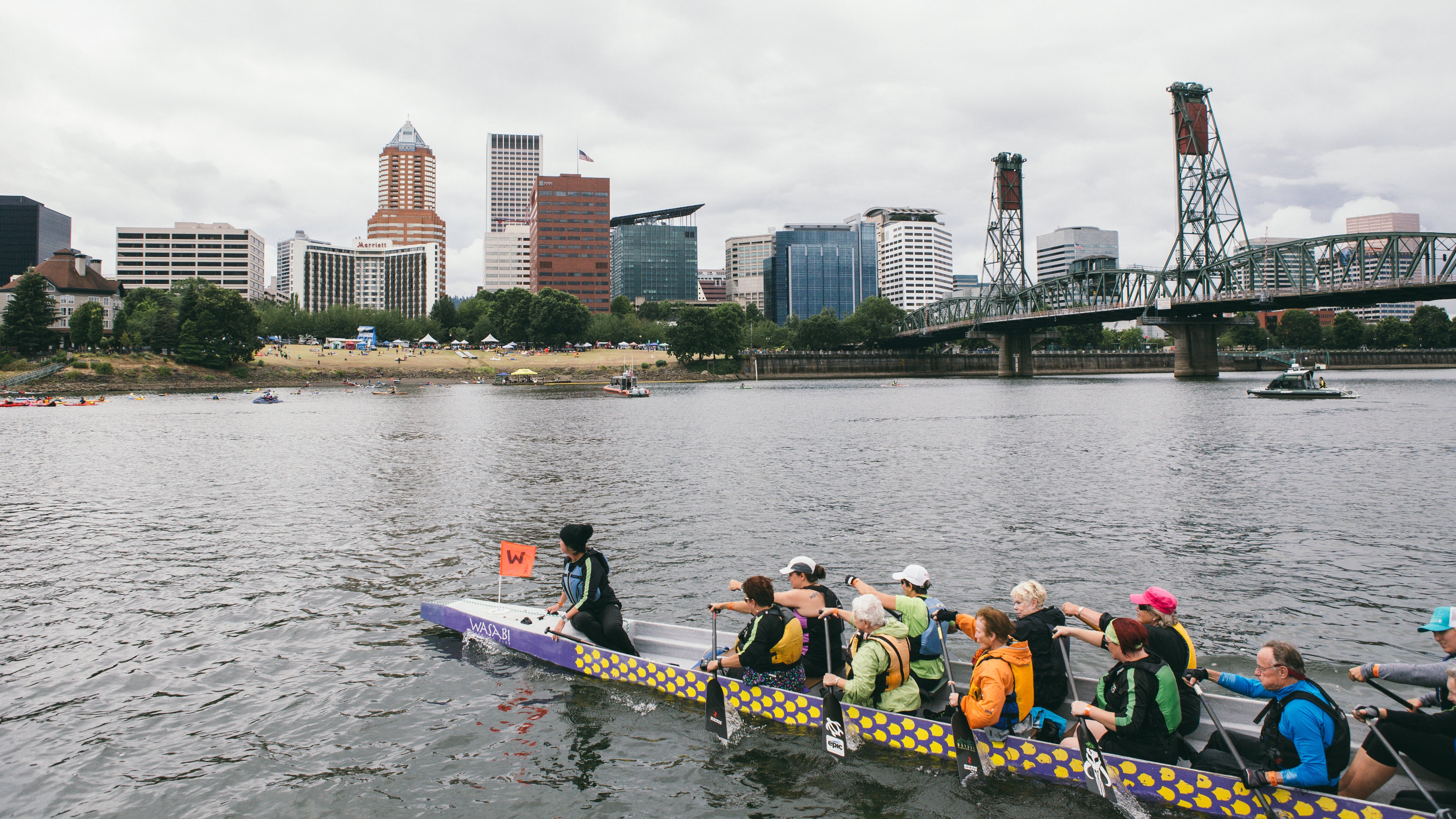The dragon boaters are done.
About 50 of them packed a regular meeting of the Multnomah County Board of Commissioners today to protest what they say is lax enforcement of the rules that govern wake boats, the high-powered, extra-heavy vessels designed to kick up waves big enough to surf—on a river.
Recent dangerous encounters brought the dragon boaters out in force. On July 20, two dragon boats from the Wasabi Paddling Club were capsized and one more was filled with water up to the gunwales after being hit by waves generated by a wake boat, Wasabi member Jim Hinsvark tells WW. Many of the people paddling with Wasabi at the time had special needs.
Five days later, Hinsvark said, another Wasabi dragon boat was flipped by a wake boat wave.
“This has been happening for years,” Hinsvark said.
Wakeboarding is a high-powered form of waterskiing that has become popular in recent years. The boats kick up waves as high as 6 feet that can be ridden on a wakeboard, which has bindings like a snowboard, or on a wakesurf board, which has no bindings. Wakeboarders hold on to a rope attached to the boat while wakesurfers do not (if they are good enough).
The dragon boaters described a number of dangerous encounters with wake boats. They operate in parts of the river where their use is prohibited, dragon boaters said, and wake boaters often leave the scene after swamping or capsizing a dragon. They sometimes buzz close to dragon boaters and flip them off, dragon boaters said.
Wasabi member Robin Allen described being capsized on both July 20 and 25. The first time, she ended up in the water under the boat, she testified. One paddler hit their head and went under.
The wake boaters “sped by laughing and joking,” Allen said.
“It is terrifying to be on a dragon boat while these wakeboarders are in the water,” said Cindy Hickman, a steerperson who has been boating on the Willamette for 22 years.
Dragon boaters aren’t the only ones who suffer, said Bob Sallinger, executive director of Willamette Riverkeeper. The waves thrown up by wake boats damage flora along the shoreline, much of which is there only because of meticulous restoration efforts.
“These kind of waves don’t occur naturally in the river,” Sallinger said.
Eric Zimmerman, chief of staff to County Commissioner Julia Brim-Edwards, says she takes these concerns seriously. “The testimony today was alarming, and Commissioner Brim-Edwards immediately committed to understand more so we can create a safer situation on the river,” Zimmerman said. “I met with the members after their testimony, and we have already started getting further into what’s proving to be a dangerous experience for river users. We plan to talk with the sheriff as well to understand what the River Patrol needs to help in that area.”
The sheriff’s office says it is aware of the problem and is working to improve safety on the river. The 11-member River Patrol Unit patrols 110 miles of waterway in the county, Deputy John Plock, a sheriff’s spokesman, said. The patrol is working to set up training for dragon boaters on what to do if they capsize, and is working with the Oregon State Marine Board to educate wake boaters on seasonal rules.
The river unit has been present for the dragon boaters’ morning and evening practices and is working with other agencies to hold a “high-visibility and enforcement mission” on the Willamette River between the Waverley Country Club and the Hawthorne Bridge, an area of contention, Plock said.
On July 20, wake boaters were towing people in that area, which is prohibited, Hinsvark, the Wasabi member, said.
“The county sheriff’s [deputies] are stretched so thin right now,” Hinsvark says. “Everyone keeps telling us that it’s about education, but it’s been four years.”
